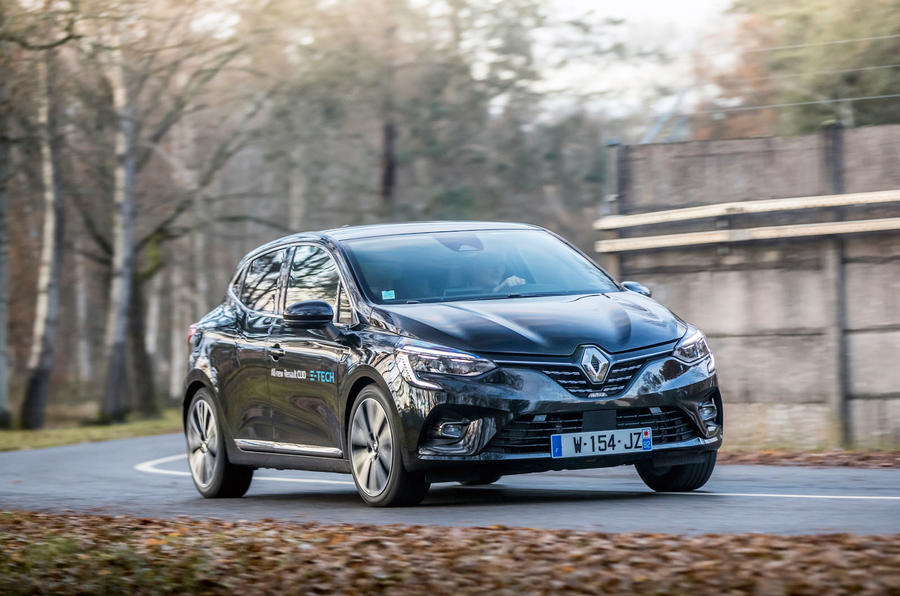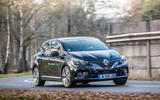What is it?
If you were thinking of swapping the Mercedes-Benz S-Class for a supermini to save the planet, think again. Downsizing to something like this Renault Clio is no longer enough when it comes to reducing CO2.
Small cars are harshly treated in this year's stiff new EU emissions legislation and superminis are going to have to get electrified to keep up. Nor is a battery electric going to cut it: they're too expensive. As Ali Kassai, director of Renault's electric vehicle product planning, points out: "There's a lot of resistance from buyers to the idea of a £30,000 battery electric hatchback."
Besides, the brand already sells its Renault Zoe battery electric, which means the equivalent Mk5 Clio needs another drivetrain. In this case, it's a hybrid, although its crossover cousin, the Renault Captur, gets a plug-in hybrid drivetrain based on the same system at the end of this year.
So far, there have been only two hybrid superminis: Honda’s Honda Jazz hybrid and Toyota’s Yaris hybrid, which, since 2011 and 2012 respectively, have proven that you can (just) make money with a tiny hybrid. Renault aims to do the same with its Clio E-Tech hybrid, which goes on sale this year at about £25,000.
The E-Tech project started about eight years ago, when the French government challenged its home car makers to come up with eco cars for the end of the decade capable of fuel consumption in the range of 150mpg. By the 2014 Paris motor show, we were looking at the Renault Eolab concept, heavily aero styled with a plug-in hybrid drivetrain that included a three-speed clutchless transmission. The 75bhp 1.0-litre three-cylinder petrol engine, 53bhp electric motor and 6.7kWh lithium ion battery gave an NEDC fuel consumption of 282mpg, with 22g/km CO2 emissions and an electric-only range of 40 miles.
"We learned a lot from that car," says Grégoire Ginet, powertrain marketing director. "It's one reason why we have two motors in this system."
Renault's system also borrows from Formula 1 energy recovery practice, being based on a twin-motor system, with a simple four-speed dog-clutch gearbox built by Renault at its STA plant in Ruitz, France.
The main electric motor is a 230V 48bhp unit from a Nissan X-Trail hybrid and the secondary smaller motor is a 230V 20bhp unit. Both motors can drive and recharge on overrun, but the smaller unit assumes the duties of starting the petrol engine, spinning up the gearbox to synchronise the shifting (dog ’boxes can be very noisy and brutal) and maintaining the battery charge above a minimum level to restart the engine.
That petrol engine is a 140bhp 1.6-litre naturally aspirated four-cylinder unit based on a Nissan MPI engine from cars sold in Russia and South America. It has no belt-driven ancillaries, with the water pump, air-conditioning compressor, transmission and engine oil pumps, power steering and brake servo all electrically driven. The dog-clutch gearbox is augmented with a two-speed transaxle, giving the option of up to eight proper gear ratios, although because both transmissions have a geared neutral, the system can juggle up to 15 ratios in total.
With the exception of the 1.2kWh 38kg lithium ion battery pack under the boot floor, the entire driveline fits under the Clio's bonnet. With a smaller fuel tank, the Clio E-Tech weighs about 10kg more than a standard Clio 1.3 dual-clutch; about 1.26 tonnes, then.






















Join the debate
Add your comment
The Best treated poorly
AC, why not refrain from alloting 'stars' when a model isn't the final version? This best in class (*) Clio deserves better. (*) Uncountable carblogs / automotive sites rate this Renault model as leader of its segment. No idea whether that's a substantial claim but hey, who am I to doubt these blessed testers.
Warranty
Have to agree with si73, this sounds like a really complex car. I wonder how long the warranty will be. Toyota hybrids can be had for the same money (or less) so i know which I would choose.
Pity it doesnt look like the
Pity it doesnt look like the Eolab. It sounds pretty interesting but why use, an old, inefficient, far too large engine ? They shouldl have used a small one like the Eolab (ideally a 3 cylinder Euro 6d diesel if they want to be really efficient, get the best MPG and lowest CO2). And, shock horror, XXXX is right (theres a first time for everything !), why is the battery so small ?
Typos
You're obsessed with me, jog on!!!